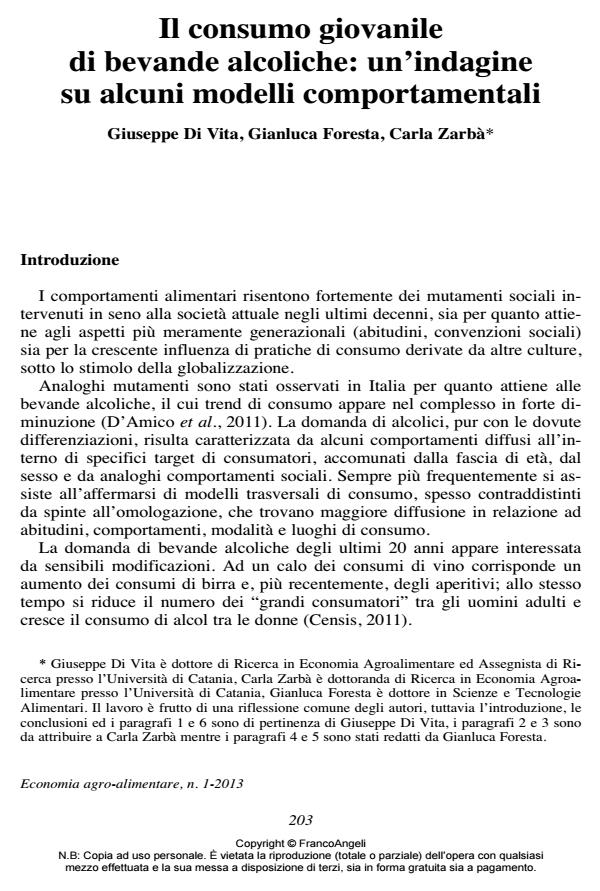Alcoholic Beverage consumption by Young People: an investigation into some trends in drinking behavior
Journal title ECONOMIA AGRO-ALIMENTARE
Author/s Giuseppe Di Vita, Gianluca Foresta, Carla Zarbà
Publishing Year 2013 Issue 2013/1
Language Italian Pages 30 P. 203-232 File size 1016 KB
DOI 10.3280/ECAG2013-001010
DOI is like a bar code for intellectual property: to have more infomation
click here
Below, you can see the article first page
If you want to buy this article in PDF format, you can do it, following the instructions to buy download credits

FrancoAngeli is member of Publishers International Linking Association, Inc (PILA), a not-for-profit association which run the CrossRef service enabling links to and from online scholarly content.
In the last decade an increese in of alcoholic beverage consumption outside mealtimes has been observed all over Italy, especially amoung young people over a wide age-range. Although the Italian culinary tradition is closely related to the wine consumption, high levels of market penetration by beer and other alcoholic beverages has been recorded. This study into the main trends in alcoholic beverage consumption within a specific segment of the youth population aims at interpreting the susceptibility of young consumers regarding such products. In particular, the purpose of the study is to identify the motivational choices and patterns of consumption amongst college students concerning to main forms of alcoholic beverage (wine, beer and spirits) through a descriptive analysis of intergroup behavior; for this purpose, the sample has been split according to demographic criteria (sex and age). The consumption of wine take place mainly in the domestic sphere and during meals, while beer consumption is prevalently non-domestic (in pubs and bars) and take place outside mealtimes, although there is some domestic consumption. The other alcoholic beverages follow a specific consumption model in social gatherings outside the home, in pubs and discos in particular. Finally, some hypotheses about decision-making and collective consumption of alcoholic beverages have been tested. The results show widespread consumption of these alcoholic drinks among young people. The data regarding the population sampled seems to indicate that choice and consumption behaviour are both induced by interaction with individuals of one’s own group (social dimension) and by experiential activities.
Keywords: Intergroup behavior, young consumers, social identity, wines and spirits Consumption
Jel codes: Q13, M3
Giuseppe Di Vita, Gianluca Foresta, Carla Zarbà, Il consumo giovanile di bevande alcoliche: un’indagine su alcuni modelli comportamentali in "ECONOMIA AGRO-ALIMENTARE" 1/2013, pp 203-232, DOI: 10.3280/ECAG2013-001010